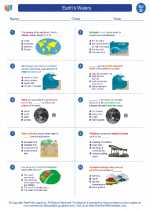Homo Erectus
Homo erectus is an extinct species of archaic human that lived throughout most of the Pleistocene geological epoch. They are believed to have first appeared around 2 million years ago in Africa and later spread to parts of Asia and Europe. Homo erectus is an important species in the human evolutionary timeline and is known for its advanced tool-making skills and adaptation to different environments.
Physical Characteristics
Homo erectus had a similar body plan to modern humans, with long legs and a barrel-shaped chest. They had a larger brain size than earlier hominin species and had a more human-like face with a protruding nose and smaller teeth. Their height ranged from about 4.9 to 6.1 feet, and they were well-adapted for upright walking and running.
Tool Making and Technology
Homo erectus is known for its sophisticated stone tool technology, including the use of hand axes and cleavers. These tools were used for hunting, butchering, and processing plant materials. The ability to create and use tools effectively was a significant advancement in human evolution and allowed Homo erectus to adapt to a wide range of environments.
Migrations and Adaptations
Homo erectus was the first hominin species to migrate out of Africa, spreading to parts of Asia and Europe. This migration is evidence of their ability to adapt to different environments and suggests a level of cognitive and cultural development. Their ability to control fire and build shelters also contributed to their successful adaptation to new territories.
Study Guide
- When and where did Homo erectus first appear?
- What were some physical characteristics of Homo erectus?
- What is Homo erectus known for in terms of tool-making and technology?
- Where did Homo erectus migrate to and what is the significance of this migration?
- What were some key adaptations of Homo erectus that contributed to their success in different environments?
Use the information above to answer the study guide questions and deepen your understanding of Homo erectus and its significance in human evolution.
.◂Science Worksheets and Study Guides Fourth Grade. Earth's Waters

 Worksheet/Answer key
Worksheet/Answer key
 Worksheet/Answer key
Worksheet/Answer key
 Worksheet/Answer key
Worksheet/Answer key
 Vocabulary/Answer key
Vocabulary/Answer key
 Vocabulary/Answer key
Vocabulary/Answer key
